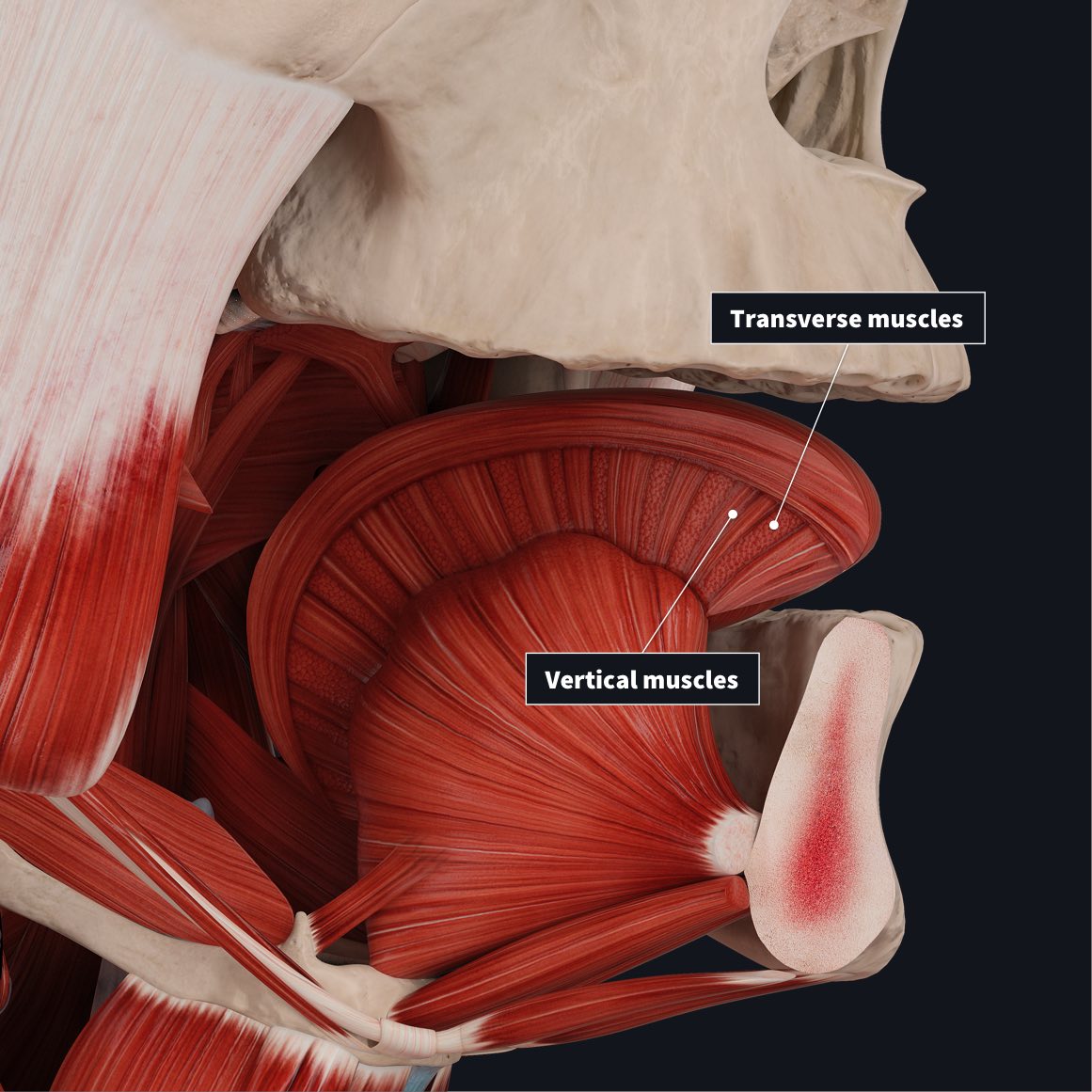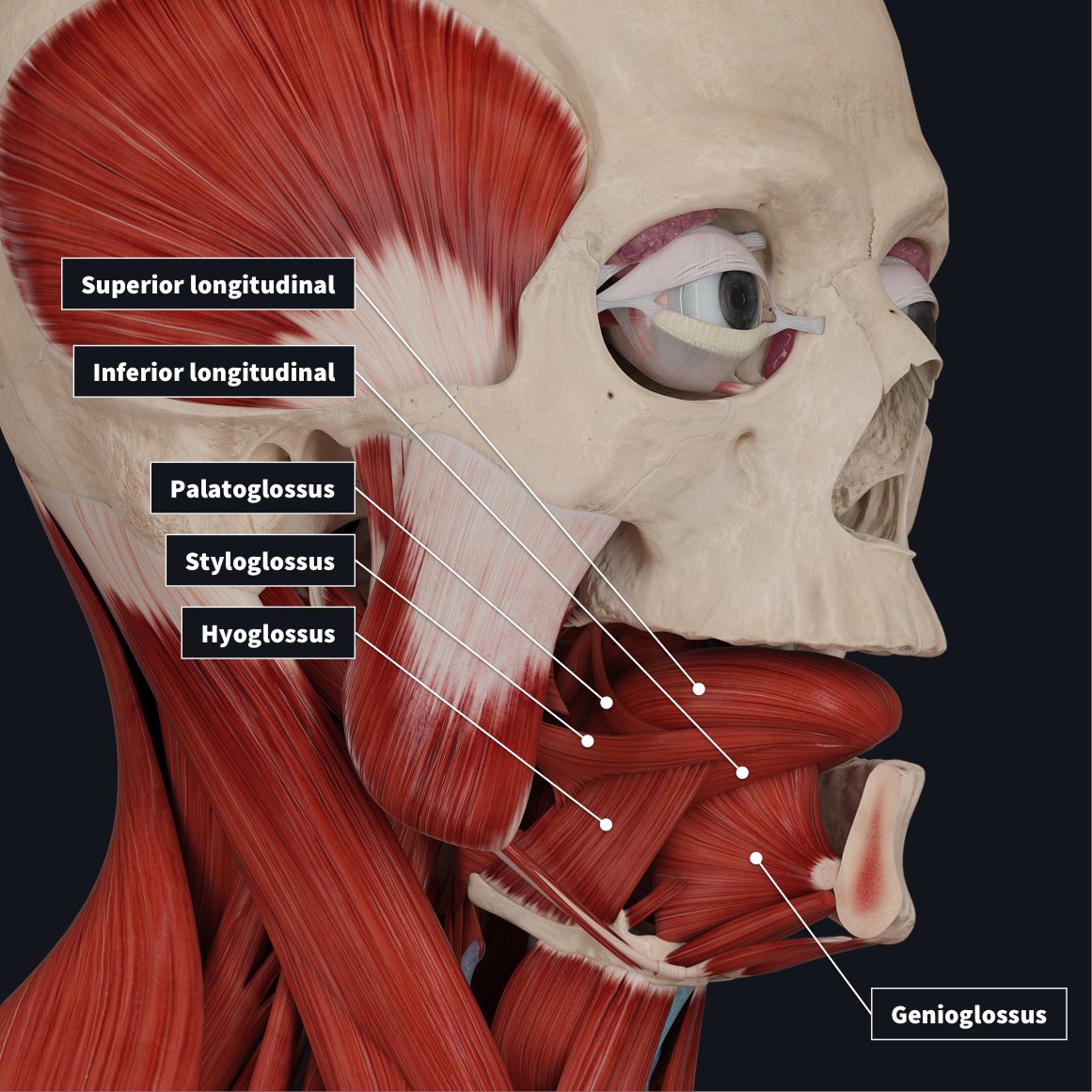
Did that title get you tongue-tied? ? You may have heard the common myth that the tongue is the strongest muscle in your body ?. However, this is in fact untrue. The tongue is all muscle, but not just one muscle. It is made up of 8 different muscles that combine to form a flexible matrix similar to an elephant’s trunk ?. The tongue is known as a muscular hydrostat, as it is one of the few organs in the body which is composed entirely of muscle and works independently of the skeleton.
The tongue is composed of 2 main muscle groups these include:
The intrinsic muscles of the tongue

These muscles only attach to other structures in the tongue. There are 4 paired muscles, they are named based on the direction they travel.
- Superior longitudinal
- Inferior longitudinal
- Transverse muscles
- Vertical muscles
These muscles affect the shape and size of the tongue. They play a role in guiding our speech, eating, and swallowing ?. Motor innervation from the hypoglossal nerve (CNXII) allows them to carry out these functions.
The extrinsic muscles of the tongue

- Genioglossus: arises from mandibular symphysis and inserts into the body of the hyoid/full length of tongue. It protrudes, depresses, and draws the tip of the tongue back and down. Innervation is from CNXII.
- Hyoglossus: arises from the hyoid and inserts into side of tongue. It depresses and retracts the tongue. Innervation is from CNXII.
- Styloglossus: originates at styloid process and temporal bone and inserts into side of tongue. It retracts and elevates the tongue. Innervation is from CNXII.
- Palatoglossus: arises from the palatine aponeurosis and inserts across the tongue. It elevates the posterior portion of the tongue. It is the only muscle innervated by the vagus nerve (CN X).
To help keep your tongue healthy remember to give it a good brush while brushing your teeth ?, drink green tea ?, hydrate with plenty of water?, and monitor the color (healthy=pink). ?
If you found this blog post useful, you might also enjoy learning about the muscles of facial expression.